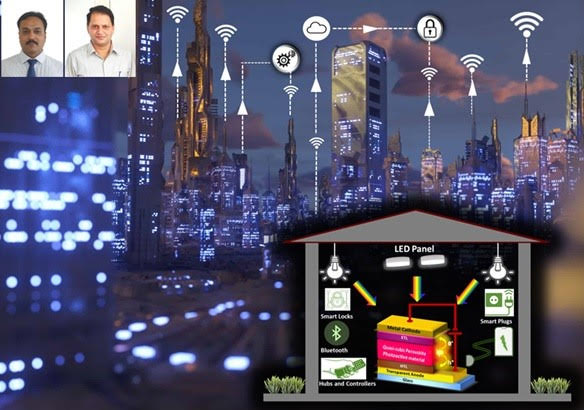IIT Mandi Researchers generate electrical energy from Household LED light sources
MANDI : Researchers at the Indian Institute of Technology Mandi have developed a new photovoltaic material that can generate power when irradiated with light produced in household light sources like LED or CFL.
The findings of the research have been published in the journal, Solar Energy, in a paper co-authored by Dr. Ranbir Singh, Ramanujam Fellow faculty, and Prof. Satinder Kumar Sharma, School of Computing & Electrical Engineering from IIT Mandi along with Dr. Vikrant Sharma, National Institute of Solar Energy (NISE), Gurugram, Dr. Vivek Kumar Shukla, Gautam Buddha University, Greater Noida, and Mr. Mritunjaya Parashar, University of North Texas, Denton, USA.
This research supports IoT technology that is finding increasing adoption in society today. IoT devices are being increasingly used in mobile phones, smart homes, and other applications that require various kinds of real-time data. These IoT devices are required to run independently without being dependent on electrical grids for power supply; primary and secondary batteries are currently used to power such devices. All batteries, irrespective of their kind, have a finite lifespan and are neither cost-effective nor eco-friendly.
Light-induced power generators are promising alternatives to batteries for powering such devices. Solar cells use the light from the sun to produce power, but since many of the IoT are used indoors, the solar light is not an option. An alternative is to find methods to harness light from indoor lighting sources to generate enough power to run indoor devices such as sensors, gadgets, Wi-Fi routers, RFID readers, etc.
The multi-institutional team has developed thin-film efficient photovoltaic cells that can generate power from any kind of light. These cells are based on perovskites – a family of crystals that can absorb sunlight and generate power. Perovskites have been studied for a long time for solar power generation. This team of researchers has explored new perovskite materials that can be used to harvest indoor artificial light and not just sunlight.
Explaining the technicalities of this work, Dr Ranbir Singh, IIT Mandi, said, “We have synthesized a photoactive quasi-cubic structured perovskite material by incorporating Formamidinium (FA+) cation in Methylammonium Lead Iodide (MAPbI3) perovskite material.”
The light absorption, morphology, charge transport, and electron trap states of the perovskites were examined and the device physics under indoor lighting conditions has been explored in detail. The fabricated PVs demonstrated a photoelectric conversion efficiency of 34.07% within indoor illumination conditions.”
The photoelectric conversion efficiency values are on par with the best-in-class perovskites for indoor applications. The lead researcher also says that this work presents a potential candidate for the development of photovoltaic material to capture the energy of indoor light using quasi-cubic perovskites.
Indoor light-induced power generation will be increasingly sought in the near future due to the exponential growth in the use of smart devices in applications such as wellness and health monitoring, smart homes, logistics, smart manufacturing, etc.

